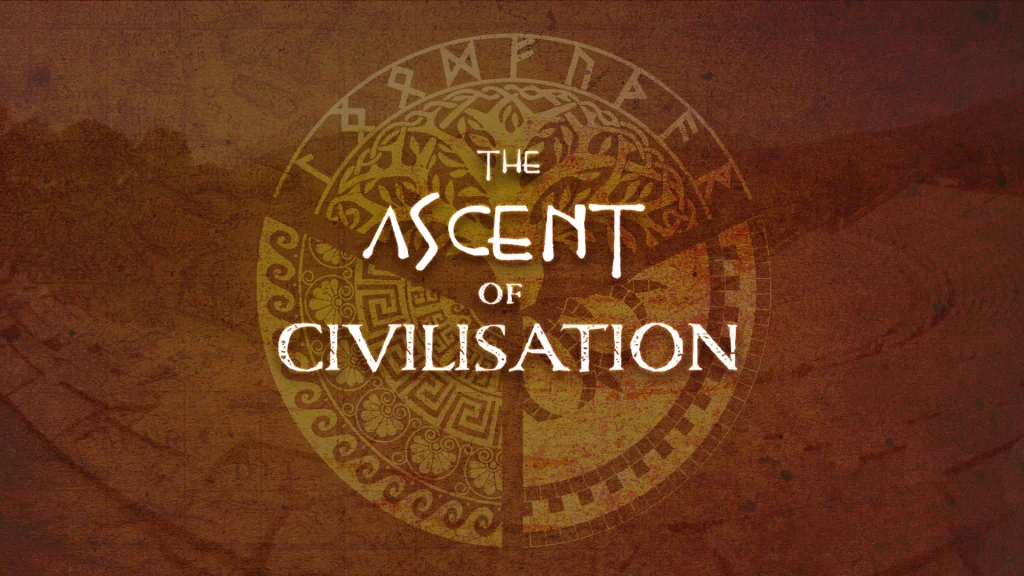Mycenae in the northeast Peloponnese was the main fortified site of contemporary Greek civilisation at the end of the Bronze Age (around 1500-1150 BC), from which the era now takes its name.
By the classical era this was a remote and insignificant hilltop overlooking the plain of Argos, the major local urban centre and state.
But its correct identification in Greek legend and Homer’s epics as the fortified and palatial headquarters of the main state of Greece in the Bronze Age showed that oral memories (after the art of writing was lost) were correct.
 Watch Now
Watch NowGreece’s first golden age
Legends alleged that there had been a chain of sophisticated and allied city-states across Greece, at a higher level of civilisation than that of the succeeding ‘Iron Age’, when society was rural and largely localised with little outside trading contacts.
This was confirmed by later 19th century archaeology. The triumphant discovery of a major fortified citadel and palace at Mycenae by German archaeologist Heinrich Schliemann, the recent discoverer of ancient Troy, in 1876 confirmed that the legends of Mycenae’s warlord Agamemnon as the ‘High King’ of Greece was based on reality.

Heinrich Schliemann and Wilhelm Dörpfeld next to the iconic Lion Gate at the entrance to Mycenae, in 1875.
Doubt remains, however, over whether this warlord had indeed led a coalition of his vassals to attack Troy around 1250-1200 BC.
Archaeological dating was however in its infancy at the time, and Schliemann muddled up the dates of the artefacts which he discovered.
The sophisticated gold jewellery which he dug up at the royal ‘shaft–grave’ (‘tholos’) burials outside the citadel walls were around three centuries too early for the Trojan War and a burial-mask which he found was not ‘the face of Agamemnon’ (featured image) as he claimed.
These graves appear to come from an early period of Mycenae’s use as a royal centre, before the citadel’s palace with its complex bureaucratic storage-system was built.

Reconstruction of the political landscape in c. 1400–1250 BC mainland southern Greece. The red markers highlight Mycenaean palatial centres (Credit: / CC).
Mycenaeans and the Mediterranean
It is usually assumed that a culturally less ‘advanced’ and more militaristic group of warrior-monarchies in mainland Greece co-existed around 1700-1500 with the richer, urban trading civilisation of ‘Minoan’ Crete, centred at the great palace of Knossos, and then eclipsed it.
Given the destruction of some Cretan palace centres by fire and the replacement of the local Cretan script of ‘Linear A’ by proto-Greek ‘Linear B’ from the mainland, the mainland warlords’ conquest of Crete is possible.
From discoveries of Mycenaean trade-goods across the Mediterranean (and more recently well-constructed ships), it appears that there were well-used trading-networks and contacts as far as Egypt and Bronze Age Britain .

A reconstruction of the Minoan palace at Knossos, on Crete. (Credit:
Power at the palaces
The bureaucratically-organised, literate states based at major palace centres of ‘Mycenaean’ Greece pre-1200, as shown by archaeology, was governed by a wealthy elite. Each was led by a ‘wanax’ (king) and war-leaders, with a class of officials and a carefully-taxed rural populace.
It appears to be more like bureaucratic ‘Minoan’ Crete than the ‘heroic’ warrior-states romanticised in myth during the Classical era and crystallised in the epics of the ‘Iliad’ and the ‘Odyssey’, attributed since early times to the semi-legendary poet ‘Homer’.
Homer is now presumed to have lived in the 8th or early 7th century BC, if indeed he was one person at all, in an era of oral culture – literacy in Greece appears to have ended as the great palaces were sacked or abandoned in the 12th century BC.

The Lion Gate, at the entrance to Mycenae in the northeast Peloponnese (Credit: GPierrakos / CC).
The bards of later centuries presented an age that was hazily remembered in the terminology of their own age – just as medieval writers and singers did with earlier ‘Arthurian’ Britain.
Mycenae itself was clearly a powerful enough state to provide the Greek ‘High King’ of the time of the Trojan War as in legend, and its ruler may indeed have been responsible for rallying his vassals to carry out foreign expeditions.
The ruler of Mycenae is the likeliest candidate for the ‘King of Achaia’ or ‘Ahiwiya’ recorded as a powerful overseas sovereign – apparently in Greece – and a raider of Western Asia Minor in 13th century BC Hittite records.
A mysterious decline
Archaeological evidence of the timing of Mycenae’s collapse might support the legends that place the sack of Mycenae by invading ‘Dorian’ tribes as occurring after the time of the son of Agamemnon’s son Orestes, at least c.70 years after the Trojan War of the mid-13th century BC.
But modern historians doubt that there was ever a major ‘invasion’ of the Mycenaean kingdoms by ‘tribal’ peoples with a lower level of civilisation from northern Greece – more likely the states collapsed into chaos through internal political or social strife or as a result of famine and epidemics.
Nevertheless, the arrival of new styles of pottery and burials at post-1000 ‘Iron Age’ sites suggests a different culture, presumably based on a new and non-literate elite , and the deserted palaces were not re-used.
Dr Timothy Venning is a freelance researcher and the author of several books spanning antiquity to the Early Modern era. A Chronology of Ancient Greece was published on 18 November 2015, by Pen & Sword Publishing.
















